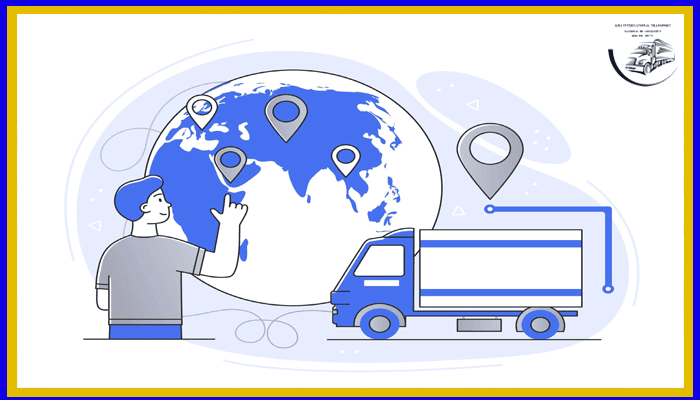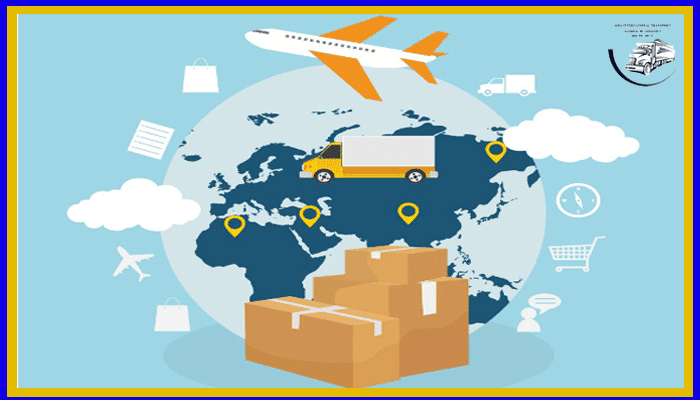Welcome to the keyhanmasirasia Site.

In our country there are three types of land transportation, sea transportation, and air transportation. Transportation In general, the world is divided into two major categories, one being the owner of the vehicle, and the other the cargo providers who always use the services of the carriers.
In terms of transportation, the carrier is called the Carrier, and those who find the cargo and choose the means of transport are called forwarders; they do not have the means of transportation but are responsible for the architecture and engineering.
Operators need to be well-educated and geographically knowledgeable in at least one foreign language, as freight forwarders are responsible for transporting cargoes from their home country to another, meaning an international profession. The forwarder connects the world, knows the ports and terminals of his country well, as well as the ports of destination country.
He must know which cargoes are being delivered to the destination countries and customs. The forwarder should not be unaware of the cargo delivery rules at the destination customs, for example he must know which port in Europe the cargo is carrying to take the cargo to a destination far from sea, and such.
Forwarder work is very different from Krier’s work. The carrier is itself and the means of transport it needs to equip it and deliver the cargoes safely to the destination. The responsibilities of each of these two jobs are different.
The means of transport are fully subject to the laws of international conventions. All carrier and forwarder laws and responsibilities are clearly stated and known as CMR.
The history of international transport is deeply intertwined with the development of human civilization, trade and technological progress. In ancient times, transportation relied mainly on human and animal power. Mesopotamia, the Egyptians and other early civilizations built rudimentary roads and used boats on rivers and seas to facilitate trade.
Early maritime endeavors, such as the voyages of Phoenician merchants, created sea routes that fostered cross-cultural exchanges and laid the groundwork for future international trade.
The Age of Discovery in the 15th and 16th centuries was an important moment in the history of international transportation. European explorers, such as Columbus, Vasco da Gama, and Magellan, searched the oceans for new trade routes to Asia and the Americas.
Advances in shipbuilding and navigation techniques, including the use of the magnetic compass and improved cartography, allowed for longer and safer voyages. This period significantly expanded global trade networks, leading to the creation of colonial empires and the exchange of goods, cultures, and ideas on an unprecedented scale.
The industrial revolution in the 18th and 19th centuries brought about revolutionary changes in transportation technology. The introduction of steam power led to the development of steamships and locomotives, greatly reducing travel time and increasing the capacity to transport goods and people.
Railroads became the backbone of international land transportation, connecting ports to domestic markets and enabling the mass movement of goods. The creation of standardized time zones, driven by the expansion of the railway system, facilitated the international synchronization of schedules and fostered globalization.
The 20th century saw the advent of the automobile and aviation, which changed the landscape of international transportation even further. The conquest of the skies began with the Wright brothers’ first powered flight in 1903, followed by the growth of commercial aviation after World War II.
This new ability to travel vast distances quickly changed tourism, trade, and global communication. Meanwhile, containerization revolutionized shipping in the 1960s, allowing goods to be transported in standardized containers, significantly reducing loading times and shipping costs. The development of global supply chains shows how critical international transportation has become to modern economies.
Today, international transportation systems comprise a complex network of roads, railways, airports, and seaports that support the movement of billions of people and tons of goods around the world. Technological innovations in logistics, such as GPS tracking, e-commerce platforms and automated systems, continue to increase efficiency and connectivity.
However, the industry also faces challenges related to sustainability, climate change and geopolitical tensions that affect global trade routes. As we move forward, the evolution of international transportation will undoubtedly play a vital role in shaping economic development and fostering greater international cooperation.
International shipping is a vital component of global trade and involves various methods of transporting goods across national borders. Understanding the different types of international shipping is essential for businesses and individuals looking to move products efficiently and cost-effectively. Here are the main types of international shipping, each explained in detail:

1. **Ocean shipping**
Sea freight is one of the most widely used methods for transporting large quantities of goods over long distances. It involves the transportation of goods by cargo ships through the ocean. Sea freight can be divided into two categories: full container load (FCL) and less than container load (LCL).
– Full Container Load (FCL): This option is used when a shipment occupies a full container. It is usually more cost-effective for larger shipments and offers faster transit times because the container is loaded and unloaded exclusively for one customer.
– Less than container load (LCL): Used when a shipment does not fill the entire container. Multiple shipments from different customers are consolidated into one container. While this option is more cost-effective for smaller shipments, delivery times may be longer due to the consolidation process.
2. **Air transportation**
Air freight is the transportation of goods by plane and is known for its speed and efficiency. This method is ideal for shipping valuable or time-sensitive items, such as electronics, pharmaceuticals, and perishable goods.
Air transportation can be divided into two categories:
– Scheduled Air Transport: Regularly scheduled flights are provided by commercial airlines that carry cargo alongside passengers. This option is often more affordable but may have stricter weight and size restrictions.
– Chartered air transport: involves hiring an aircraft solely for the purpose of transporting goods, which can be useful for large shipments or when urgent air transport is required. Although charters are usually more expensive, they can save significant time.
3. **Road transport**
Road transport includes the transport of goods by truck and is a dominant mode of transport, especially for short to medium distances and in certain regions or countries. It offers flexibility and access to various destinations that may not be accessible by other modes of transportation.
Road transport can be divided into two types:
–Full Truck Load (FTL): This happens when a shipment requires the entire space of a truck. It is usually used for large shipments and provides direct routes from origin to destination.
–Less Than Truckload (LTL): This method involves multiple carriers to maximize the efficiency of a truckload. It is cost-effective for smaller shipments, but may have longer transit times due to multiple stops for loading and unloading.
4. **Rail transportation**
Rail transport uses trains to transport goods and is particularly effective for transporting bulk goods over long distances such as coal, grain and multimodal containers. Rail transport is known for its lower environmental impact and ability to carry heavy loads.
There are three main types of rail transport services:
–Unit train:Trains that transport a commodity in bulk, such as coal or oil, from one place to another. They are designed for efficiency and speed.
– Intermodal transport: Involves the use of several modes of transport, usually trucking and rail, where containers are moved seamlessly between modes of transport. This approach increases flexibility and reduces costs.
– Mixed cargo: Refers to trains that carry different types of goods, which may require different methods of transportation. This method is flexible but may not always be the most efficient.
5. **Intermodal sending**
Intermodal transport integrates several modes of transport – such as sea, rail and truck – into a single transport chain. This approach allows shippers to take advantage of different modes of transportation, optimizing cost, speed, and environmental impact.
Intermodal transportation is characterized by the following:
– Containers: Use of standard containers that can easily be moved between different modes of transportation without unloading.
– Door-to-door services: Providing comprehensive logistics solutions, managing the entire transportation process from delivery at the sender’s place to delivery at the destination, regardless of the type of transportation.
– Collaboration between carriers: It requires coordination between different carriers and logistics providers, which makes it essential for efficient management and planning.

Result
Each of these types of international transportation has its advantages and suitability depending on factors such as the size of the shipment, urgency, cost considerations, and the nature of the goods being transported. By understanding these methods and choices, businesses can optimize their logistics strategies
Stay up to date with keyhan masir Asia!
Learn more about the trends and changes in the transport industry, on our website and our blog. Improve your business performance with reliable logistics and transport solutions. Together we are ready to help you meet your logistics needs with ease.
To start benefiting from some of these innovations today, partner with keyhan masir Asia.
Contact our experts